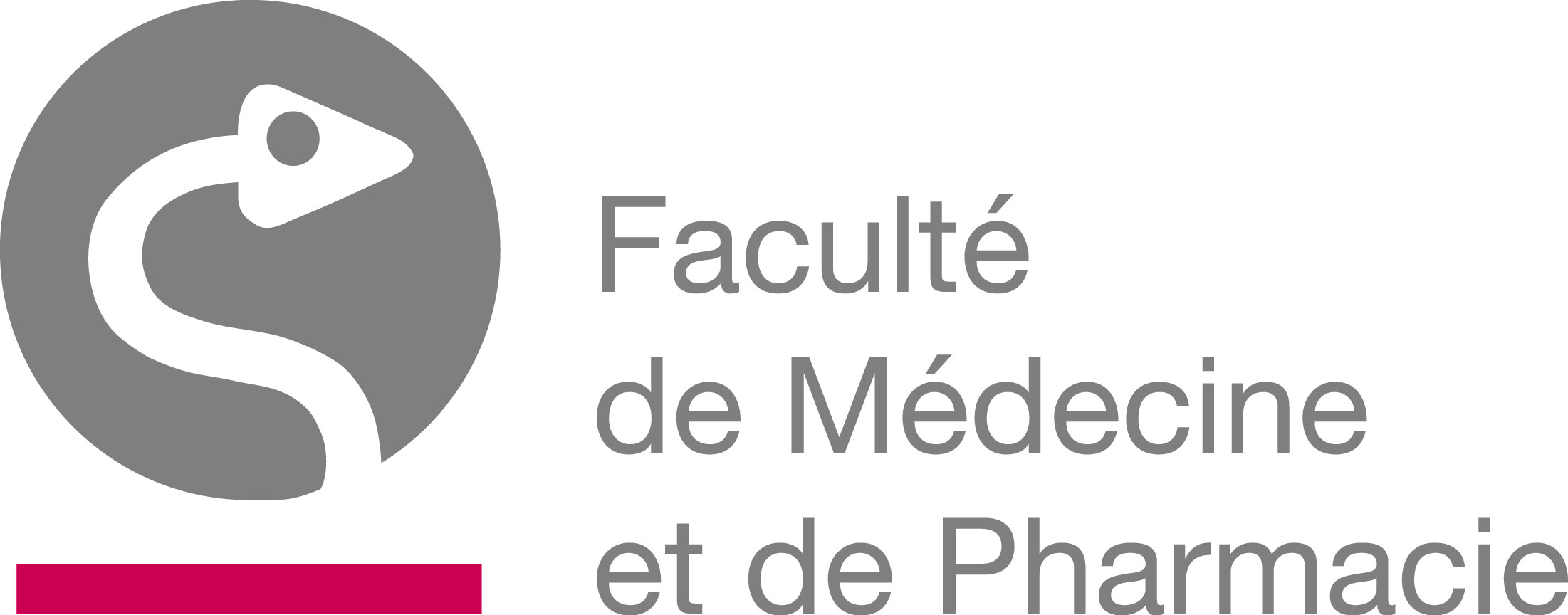 | Study programme 2021-2022 | Français | |
 | Approche pharmaceutique de la nutrition et aspects de bromatologie | ||
Programme component of Master's in Pharmacy à la Faculty of Medicine and Pharmacy |
| Code | Type | Head of UE | Department’s contact details | Teacher(s) |
|---|---|---|---|---|
| UM-M1-PHARMA-008-M | Compulsory UE | DUEZ Pierre | M136 - Chimie thérapeutique et Pharmacognosie |
|
| Language of instruction | Language of assessment | HT(*) | HTPE(*) | HTPS(*) | HR(*) | HD(*) | Credits | Weighting | Term |
|---|---|---|---|---|---|---|---|---|---|
| Français | 30 | 0 | 0 | 0 | 0 | 3 | 3.00 | 1st term |
| AA Code | Teaching Activity (AA) | HT(*) | HTPE(*) | HTPS(*) | HR(*) | HD(*) | Term | Weighting |
|---|---|---|---|---|---|---|---|---|
| M-CTPH-307 | Nutrition and Metabolism | 20 | 0 | 0 | 0 | 0 | Q1 | |
| M-CTPH-001 | Approche pharmaceutique de la nutrition et aspects de bromatologie | 10 | 0 | 0 | 0 | 0 | Q1 |
| Programme component |
|---|
Objectives of Programme's Learning Outcomes
Learning Outcomes of UE
The concepts developed will enable the future pharmacist to understand the nutritional and metabolic needs of different categories of patients, whether in terms of energy intake or intakes / deficiencies / overloads in macro- and micronutrients. The student will be able to understand the physicochemical and biochemical notions useful for interpreting the composition, cooking and digestion of food (bromatology).
Content of UE
The UE develops biochemical and physicochemical concepts (energy balance, reactive oxygen species, vitamins, macro- and micronutrients, Maillard reaction, contribution of the colonic microflora in digestion, dietary fiber...). Some clinical applications allow putting into perspective the studied concepts.
Prior Experience
Physiology and biochemistry
Type of Assessment for UE in Q1
- Written examination
Method of calculating the overall mark for the Q1 UE assessment
If the score for each AA is higher than or equal to 10/20, the TU score is an average of the scores for each AA weighted by the number of hours as follows: Nutrition and metabolism: 2/3
Pharmaceutical approach to nutrition and aspects of bromatology: 1/3
If at least one AA has a score of less than 10/20, the TU score will be the lowest AA score.
Q1 UE Assessment Comments
The assessment is based on a written test (multiple choice questionnaire and/or open questionnaire) that assesses the knowledge and ability to use the concepts seen in the course.
Type of Assessment for UE in Q3
- Written examination
Method of calculating the overall mark for the Q3 UE assessment
If the score for each AA is higher than or equal to 10/20, the TU score is an average of the scores for each AA weighted by the number of hours as follows: Nutrition and metabolism: 2/3
Pharmaceutical approach to nutrition and aspects of bromatology: 1/3
If at least one AA has a score of less than 10/20, the TU score will be the lowest AA score.
Q3 UE Assessment Comments
The assessment is based on a written test (multiple choice questionnaire and/or open questionnaire) that assesses the knowledge and ability to use the concepts seen in the course.
Method of calculating the overall mark for the Q1 UE resit assessment
-
Type of Resit Assessment for UE in Q1 (BAB1)
- N/A
Q1 UE Resit Assessment Comments (BAB1)
-
Type of Teaching Activity/Activities
| AA | Type of Teaching Activity/Activities |
|---|---|
| M-CTPH-307 |
|
| M-CTPH-001 |
|
Mode of delivery
| AA | Mode of delivery |
|---|---|
| M-CTPH-307 |
|
| M-CTPH-001 |
|
Required Reading
| AA | |
|---|---|
| M-CTPH-307 | |
| M-CTPH-001 |
Required Learning Resources/Tools
| AA | Required Learning Resources/Tools |
|---|---|
| M-CTPH-307 | Not applicable |
| M-CTPH-001 | Documents on Moodle https://www.cbip.be/fr/chapters https://www.health.belgium.be/sites/default/files/uploads/fields/fpshealth_theme_file/css_9285_avis_rec_nutr.pdf |
Recommended Reading
| AA | |
|---|---|
| M-CTPH-307 | |
| M-CTPH-001 |
Recommended Learning Resources/Tools
| AA | Recommended Learning Resources/Tools |
|---|---|
| M-CTPH-307 | Geissler C. et Powers H., "Human Nutrition" 12th Edition, Churchill Livingstone Elsevier, Edinburgh, https://www.elsevier.com/books/human-nutrition/geissler/978-0-7020-4437-3 Chevallier L., "Nutrition: principes et conseils", Elsevier Masson, Paris, http://www.elsevier-masson.fr/nutrition-principes-et-conseils-9782294708176.html Schlienger J.-L., "Nutrition clinique pratique", Elsevier Masson, Paris, http://www.elsevier-masson.fr/nutrition-clinique-pratique-9782294739767.html Grodner M., Escott-Stump S., Dorner S., "Nutritional foundations and clinical applications. A nursing approach", 6th Edition, Elsevier Mosby, St Louis https://evolve.elsevier.com/cs/product/9780323242103?role=student Appleton A., Vanberghen O., "Metabolism and Nutrition", Elsevier Mosby, St Louis https://evolve.elsevier.com/cs/product/9780723438533?role=student |
| M-CTPH-001 | Not applicable |
Other Recommended Reading
| AA | Other Recommended Reading |
|---|---|
| M-CTPH-307 | Not applicable |
| M-CTPH-001 | Nutrition : principes et conseils - L. Chevallier - Ed. Masson Nutrition clinique pratique - J.-L. Schlienger - Ed. Elsevier Masson Conseils à l'officine : Aide au suivi pharmaceutique et à l'éducation thérapeutique du patient - J.P. Belon- Ed. Masson Education thérapeutique et conseil à l'officine- F. Petit et C. Redonnet - Ed. Maloine Stockley's Drug Interactions, Eighth edition - Karen Baxter - Ed. Stockley's Drug Interactions |